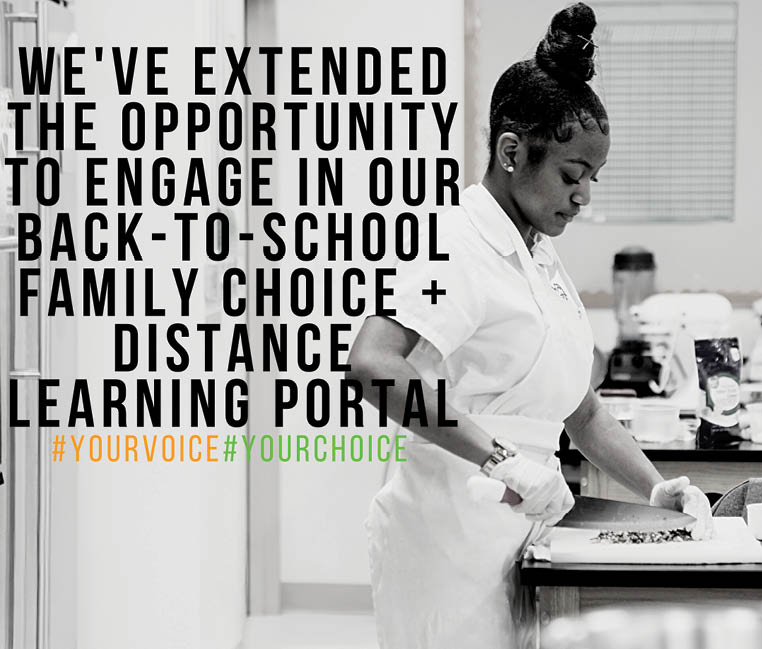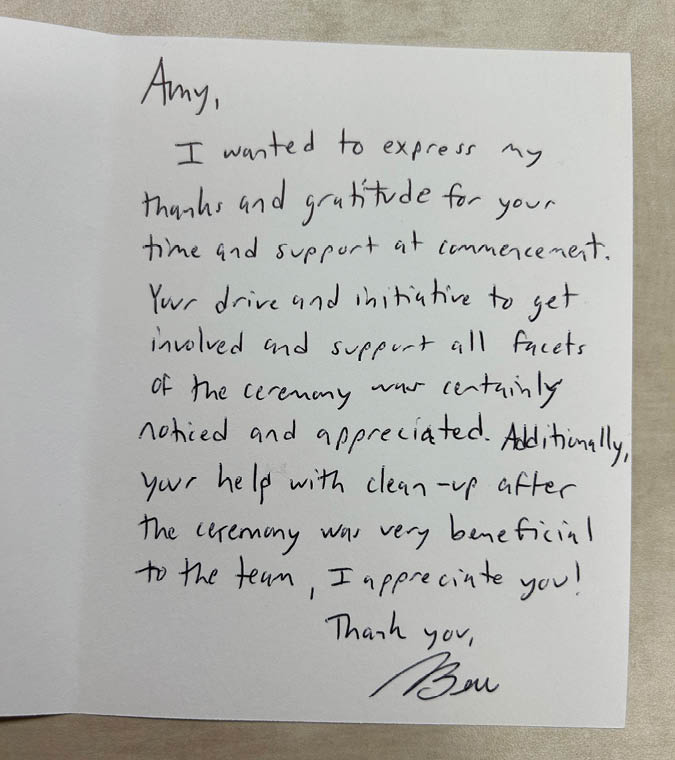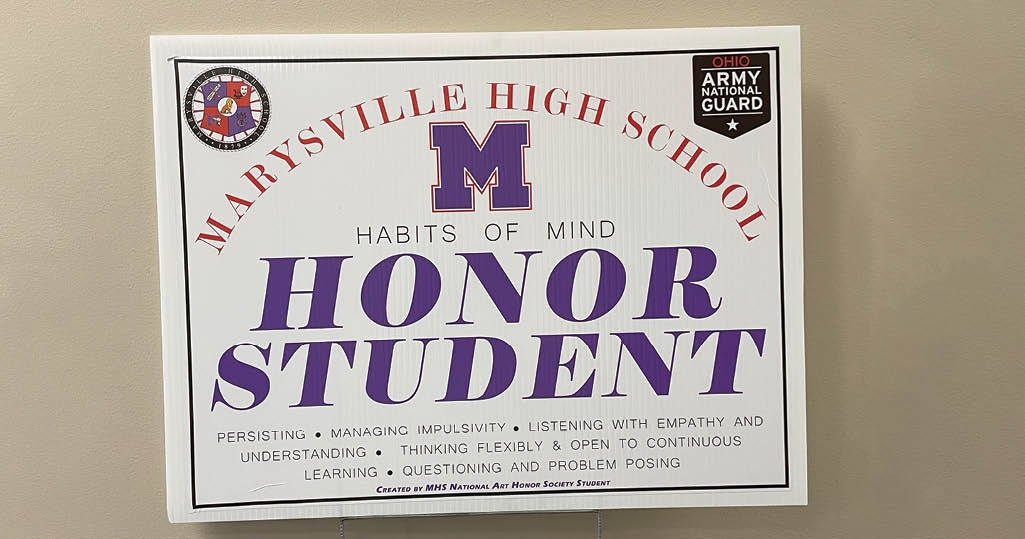Roundtable: Relationship-Building

Among the many things that educators look forward to at the beginning of the school year is the chance to build new relationships with students, families, and staff, and deepen existing ones. To learn how school leaders prioritize relationship-building, a central piece of school leadership, Principal Leadership contacted Jerel Bryant, the principal of George Washington Carver High School in New Orleans, LA, and co-facilitator of the Urban School Leaders Network; Benjamin Feeney, the principal of Lampeter-Strasburg High School in Lampeter, PA, and co-facilitator of the Aspiring School Leaders Network; and Katie Morgan, an assistant principal of Marysville High School in Marysville, OH, and co-facilitator of the Women in School Leadership Network.
Principal Leadership: How do you plan to prioritize building and sustaining relationships with students and their families this school year?
Morgan: Our administrative team really values relationships, and we work together as a team to make sure we’re kind of covering all facets of relationship-building. Informally, all three of us are community members; we live in the neighborhoods where our students live. We’re very intentional about eating at restaurants where our students and families eat, supporting local businesses that our students and families are involved in, and shopping in grocery stores where they shop. Formally, we recognize students each month who display certain habits of mind that reflect the values of our building. We really look for the kid who might have been persistent or resilient or self-sufficient in a situation where a teenager might not normally be, and we recognize them in an award ceremony. They also get a neat yard sign to display that we deliver to their house. Last school year, we also did a student connectedness survey, with the goal of having 100% of our students meaningfully connecting with a trusted adult. We did not get to 100%, so this year we will target specific students to get them engaged with school and connected to an adult.
Bryant: We need to provide families with clarity. What’s our vision, what are our values, what are our goals, and how can they best support that? We recognize that families are busy, and they can’t be everywhere. It’s hard to say there’s a silver lining to the pandemic at all. I do think one silver lining has been that it has forced us to communicate far more deliberately and use far more forums to get the word out to families.

Feeney: We did an exercise with our staff last year where we put information about every student around the cafeteria with their name and grade. We had every staff member go through and check if they knew the student and one thing about them. It could be a sport they participate in or an extracurricular club, the fact that they maybe had their brother or sister in class—anything that they were able to use to make a connection. We looked at the kids who didn’t have many marks on their poster because teachers didn’t know anything about them. This year, we’re making it a point to get them partnered with an adult in the building. We are also bringing on board a mentoring program where we’re identifying people within the community who have a vested interest in seeing our kids be successful.
Principal Leadership: What do you feel are the things to keep front and center when developing relationships with faculty and staff?
Morgan: A big thing for me is accountability. Holding people accountable means that you love them and you believe in their ability to be great. We’ve got to hold each other to our greatness and be willing to be accountable as leaders, too. Last school year was my first year in this building, so accountability and transparency were values that I kept at the forefront—for example, telling people I didn’t know an answer to something but finding it out for them and delivering information quickly was critical. Further, being honest with people to show that you trust them enough to share your truth and being able to expect that in return is also important. I really have a genuine interest in getting to know my staff in a sincere way that supports their growing and learning.

Bryant: The same dynamic that we want to have with staff is the dynamic that we want staff to have with kids, which is to be warm and demanding and clear in how we define love in our building. We want you to grow; we want you to win. I think that’s critical, and something we believe in deeply is ensuring that we’re recognizing teammates who make values-aligned choices. Did you recognize this teammate this week? This choice? Did you add value to their growth?
Feeney: The transparency piece is huge in building that trusting relationship. You’re bringing people onto your team that you need to trust, and exhibiting that by acting with integrity, being transparent, is critical. I spent more time this year doing handwritten notes to people—thank yous, acknowledgments, celebrations. You have to understand the value of that to your team. You know the feeling you get when you receive something like that from a supervisor, a friend, a colleague, and I think it goes a long way with your team and helps to create those sustainable relationships.
Principal Leadership: Did any of you learn anything about relationships in your principal preparation programs?

Morgan: The big thing I remember learning is that the research tells us that positive relationships increase student engagement and student achievement. Something I wish I would have learned about relationships was that it’s not about having everybody like you all the time. It’s about growing people and helping them succeed to build intrinsic confidence and skill sets, which is sometimes uncomfortable. That’s part of the job sometimes, too—getting people in that productive discomfort. There was good learning in my program about the impact of positive and validating relationships. I wish there was more conversation or preparation about the value in building productive discomfort with your team and being able to sit with it as a leader.
Bryant: In my principal development residency, we focused a lot on building culture within the walls of our building. Something that was new for me was this notion that a culture is built outside of your building. Oftentimes, as a principal you’re taking the best of what’s coming inside your school and building on that. Also, I didn’t have any relationships with stakeholders and alums when I took this seat. Spending time building those relationships really elevated the culture within our school. That was something that I wish I had thought more about before entering this role.

Feeney: Back to Katie’s point, productive discomfort is definitely understated in the principal prep programs. The hardest conversations are the ones that are not comfortable. I also think more preparation in that area is needed. Jerel made a great point, too, about realizing the value of additional stakeholders. When you’re preparing for the principalship, you think you’re working with students and teachers exclusively. And he’s exactly right: It’s the interactions with central administration, with the school board, the parents, just the general school community. You have no idea how far your reach is or how much you better be connected.
Principal Leadership: As co-facilitators of NASSP Leadership Networks, how do you build relationships in them?
Morgan: I’m a co-facilitator of the Women’s Leadership Network, which is new this year. Relationships are the whole reason that these ladies meet every month. We have built a lot of trust through our meeting norms and reviewing those regularly. It’s a safe space to share honest feedback and ask for opinions while sharing experiences that are unique to women.
Bryant: I co-facilitate the Urban School Leaders Network, and we’re just getting some traction. I think there’s beauty in sitting in a space and just acknowledging what is hard and recognizing that people across the country are experiencing what is hard, whether it’s a public school, a public charter school, whatever it might be. And then of course being able to problem-solve solutions is important.
Feeney: Co-facilitating the Aspiring School Leaders Network fills a critical need when we talk about the retention piece. I’m working with people who want to be the next generation to come in and lead our schools. We’ve had primarily classroom teachers and deans of students join. They come with lots of questions and a desire to learn and grow. We’ve had some members who have actively been interviewing for the principalship, and we’ve been following up with them each month and helping guide them in their journey.
Principal Leadership: Can you speak about how the networks and the relationships made in them inform your work as a school leader?
Morgan: My network has made me much more intentional about leadership development. It’s so easy to get caught up in the reactive part of the job or even just the day-to-day minutiae, but we can’t forget about that leadership development piece, especially in people who maybe don’t realize they’re equipped to be leaders. I try to give our network members really practical habits, strategies, or even encourage them to pursue their aspirations. There is still an age-old undertone for many women where we ask, “How do I juggle being a supervisor, mom, wife, learner? How do I stick the landing on all of these?” It’s helpful to hear from others what strategies allow them to be successful.
Bryant: In our group, we’re often sharing practices, artifacts, strategies, and it makes me more mindful that there are a number of ways to hit a goal. It compels me to ask, what is the purpose here? What is the vision of this? Because a great lunchtime routine for me may not actually align to your priorities or your goals or, ultimately, the vision of your institution. I think in my own practice, the network has helped me to assume less about rationale and ask myself if what we’re doing fully aligns to where we’re trying to go, even if it’s working well.
Feeney: I’ve had the opportunity to supervise five aspiring school leaders through our district’s internship program over the last few years. That, in addition to the network, has really helped guide how I think about new school leaders and people trying to enter the field. Like Jerel said, being able to take a step back and being able to understand perspectives and then helping guide them is critical. I was recently in the process of interviewing for a new assistant principal, so being able to think about what these people are thinking about as they’re preparing for the interviews and in the seat across from me has been very helpful, thanks to the network. I feel like I’m getting as much or more out of what I am putting into the network as I’m taking away every month.
Principal Leadership: In your career, what’s the most important lesson that you’ve learned about relationships?
Morgan: I worked for a superintendent early in my career who always said, “Feedback is a gift.” I think folks thought he was being facetious at times when he would say that, because we get a lot of feedback in our position. But the more I got to know and work with him, the more I developed that same mindset. When you deliver feedback, you are genuinely interested and invested in the other person’s growth and success. Feedback really is a gift. It shows that you trust your staff’s desire to grow and learn while demonstrating your own growth mindset.
Bryant: Relationships require constant care, and they change. The relationship that I had with my teammates in year one might be different than the relationships I have with them in year two, three, four, or five. Not just because of things in the building, but because of life changes. Also, I’m learning to rely on peers and teammates in the building to help foster relationships. For a while I felt like I needed to be the sole carrier of relationships in the building, but I’m now empowering others to build those relationships. And although these connections are beautiful, you’ve got to save yourself sometimes. Knowing as a leader when to set some boundaries or have a threshold is important. I need time to have a relationship with myself as a leader of this institution for me to be better for everyone. I’m not there yet in learning all that, but I’m constantly evolving.
Feeney: Like Jerel said, relationships are living things that constantly need to be fed and fostered. It’s important to continue to see things in your people. Are there opportunities for them for leadership? Is there something that you think they’d really excel at? Where can you continue to push them to continue to grow? Maybe someone has hit a roadblock in their career. What can we do to continue to inspire them and remind them why they’re here and what they’re doing? Relationship-building is an area where we can never spend enough time. But we really do need to focus on being able to support ourselves, too, so we’re able to continue to support and encourage our teachers.
